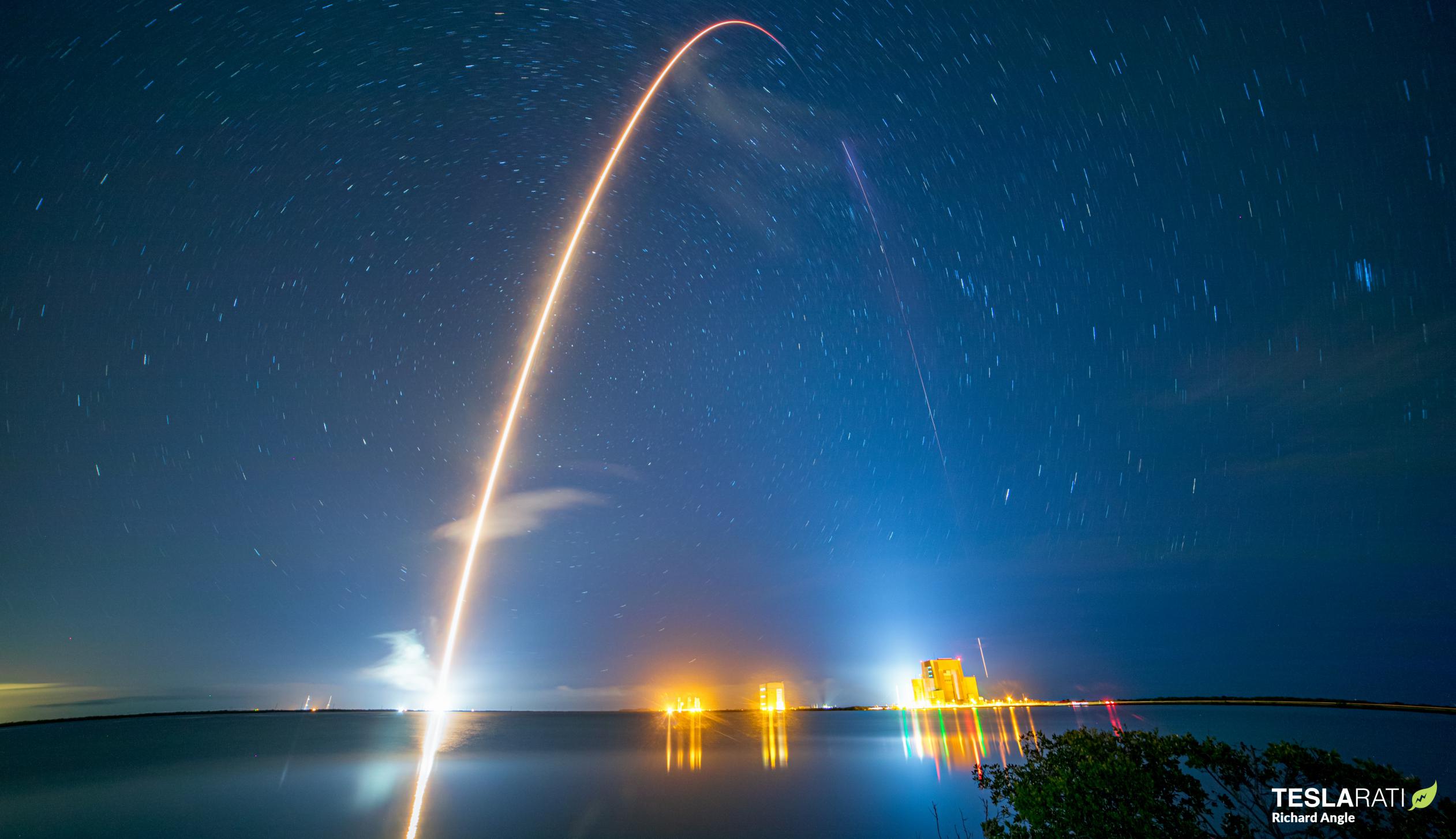
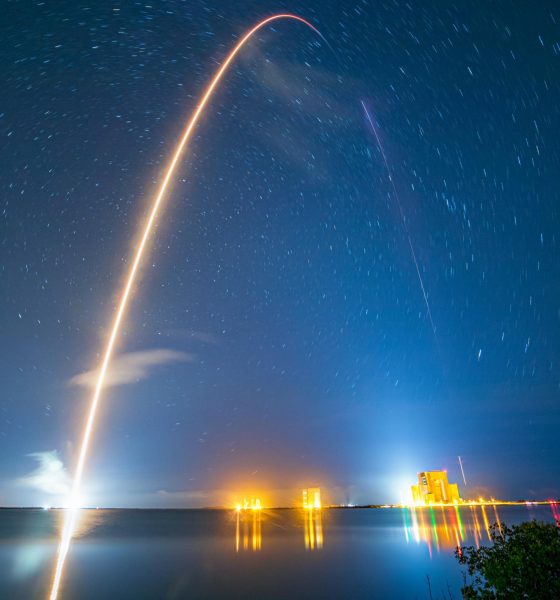
News
SpaceX Falcon 9 rocket nails first operational NASA astronaut launch [updated]
Update: SpaceX has successfully resolved a handful of minor thermal control issues facing the brand new Crew Dragon capsule currently ferrying four astronauts in low Earth orbit (LEO).
As previously noted, shortly after the spacecraft reached orbit, two redundant thermal control system pumps registered pressure spikes, pushing Crew Dragon to use the backup pump. SpaceX was able to resolve that issue, effectively restarting the pumps and confirming healthy operation. Several hours later, the backup pump (“Loop B”) suffered another minor issue but was again returned to healthy operations. Simultaneously, Crew-1 astronauts found themselves stuck at an (admittedly comfortable) cabin temperature of 23C (~73F).
More pressingly, three of four heaters used to warm the propellant fed to Crew Dragon’s small Draco maneuvering and attitude control thrusters were automatically disabled a few hours after liftoff. Essential for most operations in orbit and necessary for Dragon to be allowed to remain docked with the ISS, restoring the functionality of at least one of the three heaters was essential, and SpaceX was thankfully able to restore function to all three by relaxing excessively conservative limits in the spacecraft’s flight software. Thanks to SpaceX’s fast work, Dragon is now in perfect health and ready for two crucial Draco burns at 11:20 am and 12 pm EST (UTC-5) on Monday, November 16th and is still scheduled to arrive at the ISS around 11 pm EST.
Right on schedule, a SpaceX Falcon 9 rocket has successfully lifted off on the company’s operational NASA astronaut launch debut, sending four crew members on their way to the International Space Station (ISS) in a historic moment for commercial spaceflight.
Days prior, NASA and SpaceX completed a multi-day “flight readiness review (FRR),” the results of which made SpaceX the first private company in human history to be qualified by a national space agency for routine astronaut launches. As is now more or less routine, the SpaceX Falcon 9 rocket assigned to NASA’s Crew-1 mission performed flawlessly over the 12 minutes it was involved in the launch, including nominal booster and upper stage performance, a successful booster landing at sea, and a smooth Dragon deployment from Falcon 9’s expendable second stage.
In a small point of concern, Crew Dragon capsule C207 (colloquially named Dragon Resilience by its crew) appeared to suffer a minor hardware or software fault shortly after orbital insertion, offering the first public glimpse behind the scenes as ground teams coordinated with Dragon’s orbiting astronaut crew to diagnose and fix the issue.
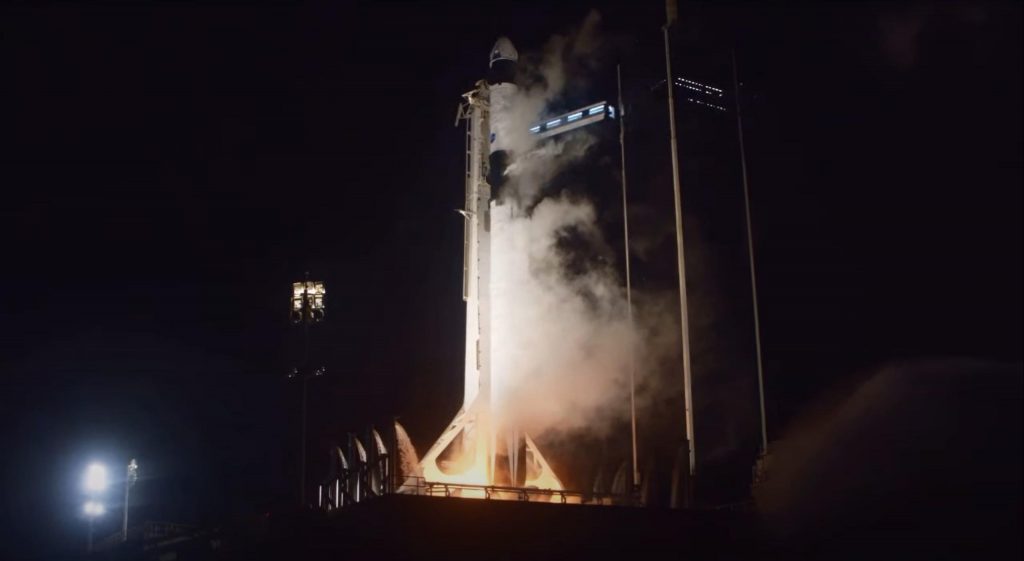
According to information revealed by SpaceX and NASA officials as they interacted with Crew-1 NASA astronauts Mike Hopkins, Victor Glover, Shannon Walker, and Japanese (JAXA) astronaut Soichi Noguchi, Crew Dragon’s fault detection software was tripped sometime after reaching orbit. Both thermal control system (TCS) “loop” pumps – likely referring to pumps used to circulate a liquid-based radiator system to maintain capsule temperature – experienced off-nominal pressure spikes, causing the spacecraft computer to switch to the second pump (“Loop B”).
As SpaceX’s main earth-to-ground communications team member (CapCom) noted, the TCS pump issue was far from critical given that both pumps appeared to be healthy – and one of those two redundant pumps functioning healthily – moments after Dragon alerted its passengers to the issue. Deemed to be not a showstopper, SpaceX continued the mission and permitted Crew Dragon to begin its first orbit-raising thruster burn – the first of a fairly complex series of ‘phasing’ burns needed to safely rendezvous with the International Space Station (ISS).
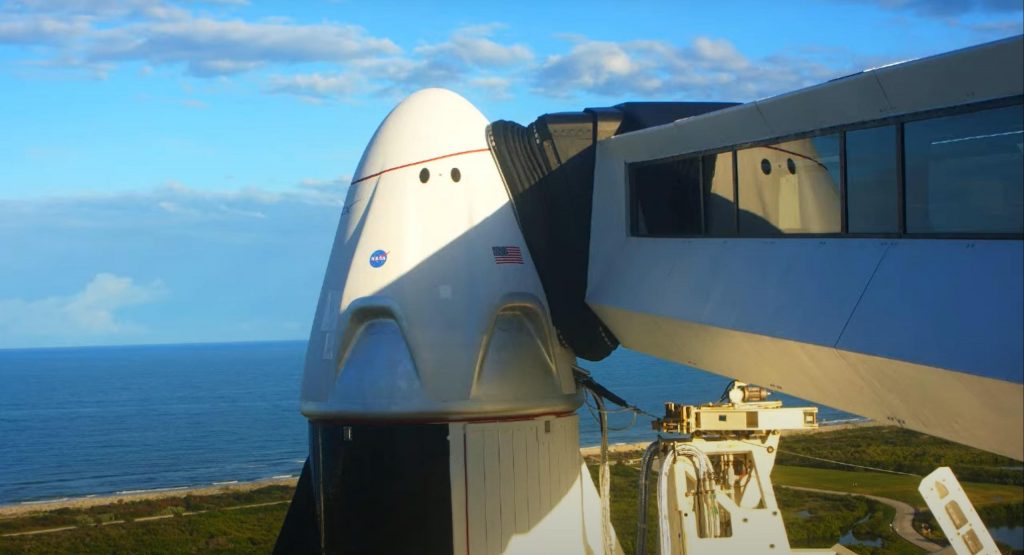
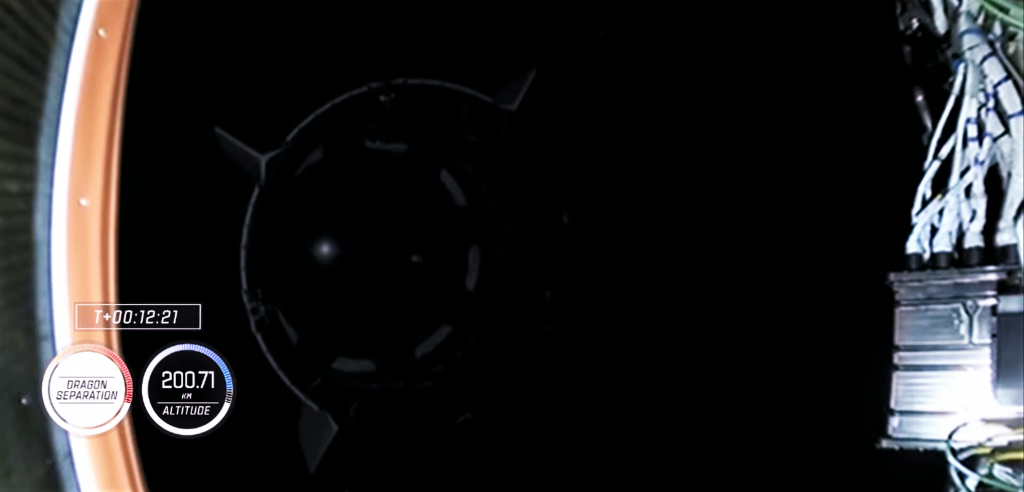
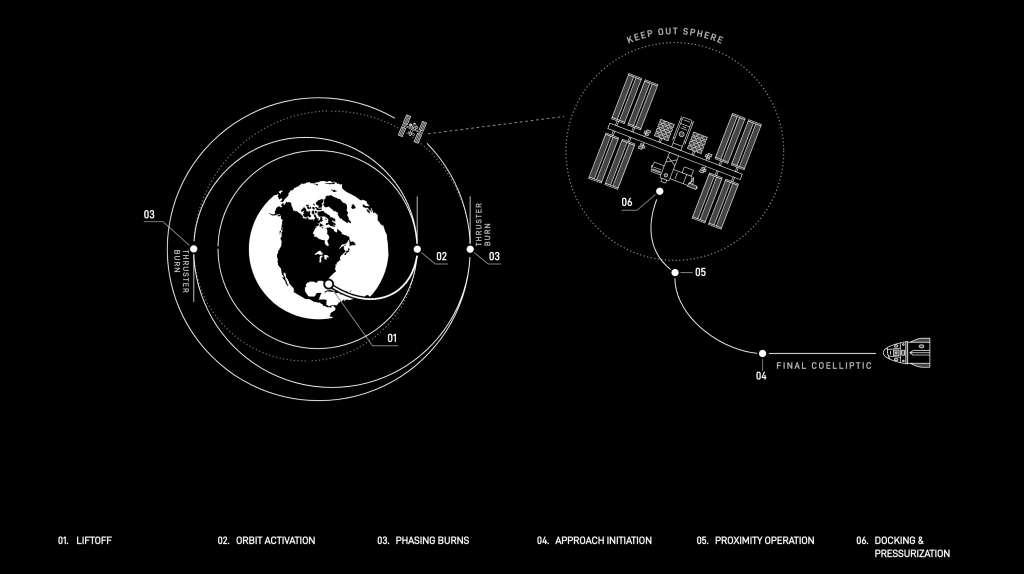
Unfortunately, due to a 24-hour weather delay from November 14th to November 15th, the complexities of orbital rendezvous mean that Crew Dragon’s Crew-1 mission to the ISS will involve a roughly day-long cruise phase. Had SpaceX been able to launch on the 14th, the cruise phase would have been just 8.5 hours long – perhaps the fastest crewed US space station rendezvous ever. Crew-1 will thus align quite closely with SpaceX’s Demo-2 astronaut launch debut, although likely not interspersed with manual astronaut piloting tests this time around.
On top of Crew Dragon’s thus far successful performance, Falcon 9 also completed a task critical for future Crew Dragon launches when new booster B1061 safely landed aboard SpaceX drone ship Of Course I Still Love You (OCISLY). While normally a distinctly secondary objective, booster recovery was all but essential for SpaceX and NASA during the Crew-1 launch after NASA’s recent reveal that B1061 has been assigned to launch Crew-2 as early as March 31st, 2021. In the likely event that the Falcon 9 booster is in good condition and NASA signs off after shadowing SpaceX’s refurbishment process, SpaceX will also become the first private company in history to launch astronauts into orbit on a flight-proven rocket booster. Additionally, thanks to plans to reuse Crew Dragon capsule C206 of Demo-2 fame, Crew-2 will also mark the first time in history that US astronauts launch into orbit in a reused space capsule.


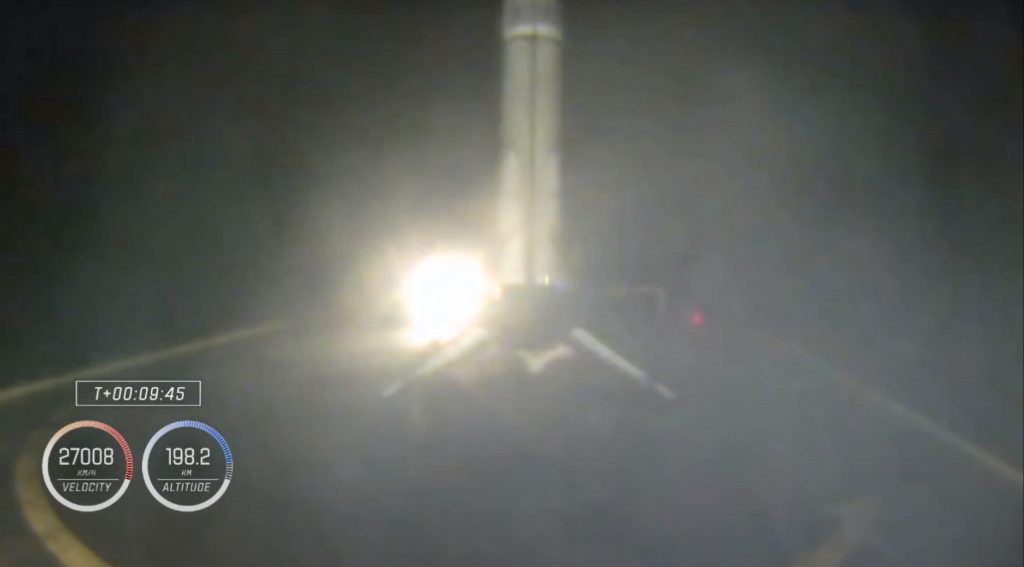
If the Crew-1 cruise phases goes according to plan, Crew Dragon will autonomously ferry Hopkins, Glover, Walker, and Noguchi from a ~200 km (~125 mi) parking orbit to the International Space Station (ISS) between now and Monday, November 16th, nominally docking with the space station around 11 pm EST (04:00 UTC 17 Nov). From liftoff to reentry, Crew-1 is expected to be the longest continuous spaceflight of a US spacecraft in American history, spending approximately six months in orbit. For JAXA astronaut Soichi Noguchi, his Crew-1 launch also made him the third astronaut in human history to fly to orbit on three separate vehicles.
Ultimately, for SpaceX, the company has never been closer to achieving its foundational goal of enabling the affordable expansion of humanity into space than it is after today’s successful Crew-1 launch.

News
SpaceX shades airline for seeking contract with Amazon’s Starlink rival

SpaceX employees, including its CEO Elon Musk, shaded American Airlines on social media this past weekend due to the company’s reported talks with Amazon’s Starlink rival, Leo.
Starlink has been adopted by several airlines, including United Airlines, Qatar Airways, Hawaiian Airlines, WestJet, Air France, airBaltic, and others. It has gained notoriety as an extremely solid, dependable, and reliable option for airline travel, as traditional options frequently cause users to lose connection to the internet.
Many airlines have made the switch, while others continue to mull the options available to them. American Airlines is one of them.
A report from Bloomberg indicates the airline is thinking of going with a Starlink rival owned by Amazon, called Leo. It was previously referred to as Project Kuiper.
American CEO Robert Isom said (via Bloomberg):
“While there’s Starlink, there are other low-Earth-orbit satellite opportunities that we can look at. We’re making sure that American is going to have what our customers need.”
Isom also said American has been in touch with Amazon about installing Leo on its aircraft, but he would not reveal the status of any discussions with the company.
The report caught the attention of Michael Nicolls, the Vice President of Starlink Engineering at SpaceX, who said:
“Only fly on airlines with good connectivity… and only one source of good connectivity at the moment…”
CEO Elon Musk replied to Nicolls by stating that American Airlines risks losing “a lot of customers if their connectivity solution fails.”
American Airlines will lose a lot of customers if their connectivity solution fails
— Elon Musk (@elonmusk) December 14, 2025
There are over 8,000 Starlink satellites in orbit currently, offering internet coverage in over 150 countries and territories globally. SpaceX expands its array of satellites nearly every week with launches from California and Florida, aiming to offer internet access to everyone across the globe.
Currently, the company is focusing on expanding into new markets, such as Africa and Asia.
News
Tesla Model Y Standard stuns in new range test, besting its Premium siblings
Tesla’s newer vehicles have continued to meet or exceed their EPA estimates. This is a drastic change, as every 2018-2023 model year Tesla that Edmunds assessed did not meet its range estimates.

The Tesla Model Y Standard stunned in a new range test performed by automotive media outlet Edmunds, besting all of its Premium siblings that are more expensive and more luxurious in terms of features.
Testing showed the Model Y Standard exceeded its EPA-estimated range rating of 321 miles, as Edmunds said it is the “longest-range Model Y that we’ve ever put on our loop.” In the past, some vehicles have come up short in comparison with EPA ranges; for example, the Model Y’s previous generation vehicle had an EPA-estimated range of 330 miles, but only drove 310.
Additionally, the Launch Series Model Y, the first configuration to be built in the “Juniper” program, landed perfectly on the EPA’s range estimates at 327 miles.
It was also more efficient than Premium offerings, as it utilized just 22.8 kWh to go 100 miles. The Launch Series used 26.8 kWh to travel the same distance.
It is tested using Edmunds’ traditional EV range testing procedure, which follows a strict route of 60 percent city and 40 percent highway driving. The average speed throughout the trip is 40 MPH, and the car is required to stay within 5 MPH of all posted speed limits.
Each car is also put in its most efficient drive setting, and the climate is kept on auto at 72 degrees.
“All of this most accurately represents the real-world driving that owners do day to day,” the publication says.
With this procedure, testing is as consistent as it can get. Of course, there are other factors, like temperature and traffic density. However, one thing is important to note: Tesla’s newer vehicles have continued to meet or exceed their EPA estimates. This is a drastic change, as every 2018-2023 model year Tesla that Edmunds assessed did not meet its range estimates.
Tesla Model Y Standard vs. Tesla Model Y Premium
Tesla’s two Model Y levels both offer a great option for whichever fits your budget. However, when you sit in both cars, you will notice distinct differences between them.
The Premium definitely has a more luxurious feel, while the Standard is stripped of many of the more premium features, like Vegan Leather Interior, acoustic-lined glass, and a better sound system.
You can read our full review of the Model Y Standard below:
Tesla Model Y Standard Full Review: Is it worth the lower price?
News
Xpeng CEO: Tesla FSD 14.2 has developed “near-Level 4” performance
While acknowledging that imperfections remain, the Xpeng CEO said FSD’s current iteration significantly surpasses last year’s capabilities.

Xpeng CEO He Xiaopeng has offered fresh praise for Tesla’s Full Self-Driving (FSD) system after revisiting Silicon Valley more than a year after his first hands-on experience.
Following extended test drives of Tesla vehicles running the latest FSD software, He stated that the system has made major strides, reinforcing his view that Tesla’s approach to autonomy is indeed the proper path towards autonomy.
Tesla FSD closing in on Level 4 driving
During his visit, He test-drove a Tesla equipped with FSD V14.2. He also rode in a Tesla Robotaxi. Over roughly five hours of driving across Silicon Valley and San Francisco, He said both vehicles delivered consistent and reassuring performance, a notable improvement from his experience a year earlier.
According to He, Tesla’s FSD has evolved from a smooth Level 2 advanced driver assistance system into what he described as a “near-Level 4” experience in terms of capabilities. While acknowledging that imperfections remain, the Xpeng CEO said FSD’s current iteration significantly surpasses last year’s capabilities. He also reiterated his belief that Tesla’s strategy of using the same autonomous software and hardware architecture across private vehicles and robotaxis is the right long-term approach, allowing users to bypass intermediate autonomy stages and move closer to Level 4 functionality.
He previously tested Tesla’s FSD V12.3.6 and Waymo vehicles in California in mid-2024, noting at the time that Waymo performed better in dense urban environments like San Francisco, while Tesla excelled in Silicon Valley and on highways.
Xpeng’s ambitious autonomy roadmap and internal challenge
The Silicon Valley visit also served as a benchmark for Xpeng’s own autonomy ambitions. He stated that Xpeng is looking to improve its VLA autonomous driving system to match the performance of Tesla’s FSD V14.2 within China by August 30, 2026. Xpeng is poised to release its VLA 2.0 smart driving software next quarter, though He cautioned that the initial version will not be able to match FSD V14.2’s capabilities, as noted in a CNEV Post report.
He also added a personal twist to the goal, publicly challenging Xpeng’s autonomous driving team. If the performance target is met by the 2026 deadline, the CEO stated that he will approve the creation of a Chinese-style cafeteria for Xpeng’s Silicon Valley team. If not, Liu Xianming, head of Xpeng’s autonomous driving unit, has pledged to run naked across the Golden Gate Bridge, He noted.








